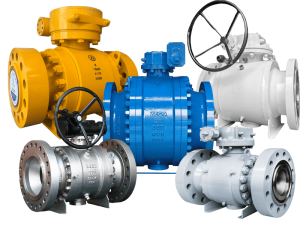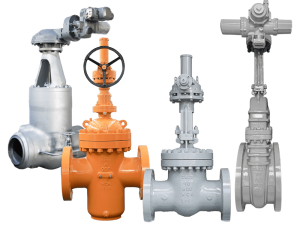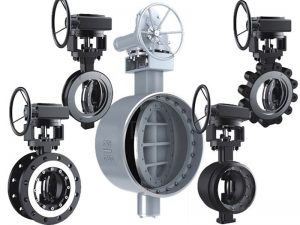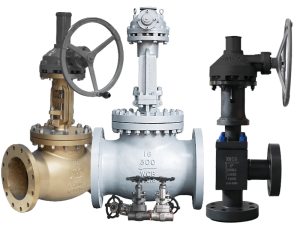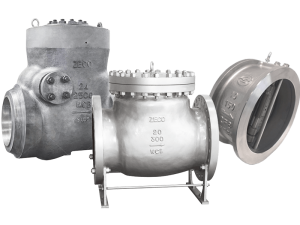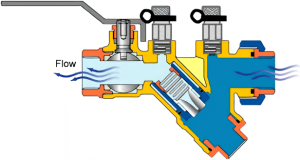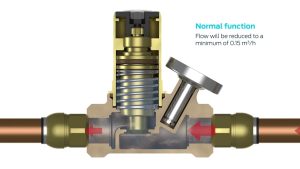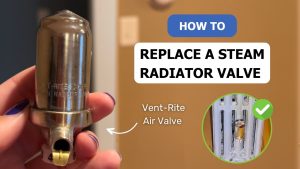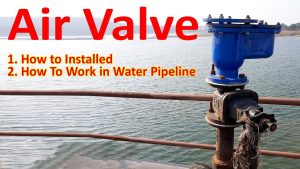Когда речь идет о регулировании потока в промышленных трубопроводных системах, шаровые краны и дисковые затворы два наиболее распространенных варианта.
Оба типа клапанов имеют свои преимущества и недостатки по сравнению друг с другом. Знание их различий позволит вам выбрать оптимальный клапан для конкретного применения.
В этой статье я подробно сравню шаровые краны и поворотные затворы, чтобы вы могли принять обоснованное решение о выборе между ними.
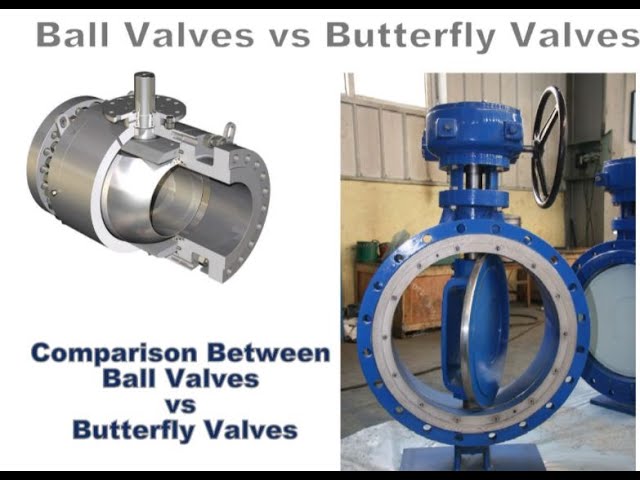
Обзор шаровых кранов
Шаровой кран использует перфорированный сферический диск для управления потоком жидкости или газа. В открытом состоянии отверстие шара расположено на одной линии с входом и выходом корпуса крана. В закрытом состоянии отверстие перпендикулярно, блокируя поток.
Шаровые краны - это поворотные клапаны, требующие поворота на 90 градусов для перехода из полностью открытого в полностью закрытое положение. Это делает их относительно быстродействующими по сравнению с другими типами клапанов.
Они могут работать с высоким давлением до 1 000+ PSI в зависимости от модели и способны регулировать поток до определенной степени с помощью точного позиционирования.
Области применения шаровых кранов
Шаровые краны действительно хорошо подходят для включения/выключения, а не для дросселирования потока. Их герметичность и способность выдерживать высокое давление также хорошо подходят для этих целей:
- Газовые линии
- Транспортировка химикатов/нефти
- Высокотемпературные жидкости
- Коррозионные среды
- Вакуумные линии
Некоторые варианты шаровых кранов, такие как V-порт или характерная регулирующая нарезка, обеспечивают разумное регулирование расхода. Но в целом вы получите лучшую модуляцию от шаровых или дроссельных клапанов.
Обзор поворотных затворов
В поворотных клапанах также используется конструкция вращающегося диска. Но вместо сферического шара в центре корпуса клапана вращается тонкий диск.
В открытом положении поток беспрепятственно проходит вокруг диска. В закрытом положении диск прилегает к периметру корпуса клапана, блокируя поток, подобно шаровому крану.
Области применения, в которых выделяются поворотные затворы
Поворотные затворы предназначены для применения в системах большого диаметра, где другие типы клапанов непрактичны или нецелесообразны с точки зрения затрат.
Обычно их можно встретить на таких должностях, как:
- Всасывание/вытекание охлаждающей воды
- Линии пожаротушения
- Городской водный транспорт
- Гидроэлектрические пенштоки
- Перелив ливневых вод
- Канализационные линии
В некоторых случаях они подходят для дросселирования лучше, чем шаровые краны. Диск не полностью выходит из потока при открытии, что обеспечивает разумный контроль.
Сравнение шаровых кранов и поворотных затворов
Теперь, когда вы знаете основные характеристики шаровых и поворотных кранов, давайте сравним их по некоторым ключевым категориям:
Расходы
Для небольших труб диаметром менее 12 дюймов шаровые и поворотные краны стоят примерно одинаково.
Но после 12 дюймов поворотные затворы становятся гораздо более доступными по цене, чем аналогичные шаровые краны. В верхней части, достигающей 48 дюймов, поворотные затворы стоят примерно на 1/4 дешевле шаровых кранов.
Легкий цельный диск дешевле в производстве, чем массивный цельный шар, требующий длительной механической обработки.
Победитель: Клапан-бабочка
Номинальные значения давления
Когда дело доходит до работы с давлением, шаровые краны являются бесспорными чемпионами. Многие из них могут без проблем выдерживать давление не менее 800 PSI, а специальные модели - и того больше.
Главный недостаток дроссельного клапана - его неспособность работать с высоким давлением. Все, что превышает 300 PSI, чревато утечкой и возможным повреждением клапана. Посадка зависит от того, насколько тонкая кромка идеально сопрягается с уплотнением по периметру.
Высокое давление затрудняет закрытие клапана и требует использования байпаса для выравнивания давления в линии.
Победитель: Шаровой кран
Управление потоком
Оба типа клапанов легко справляются с управлением включением/выключением. И оба могут в той или иной степени регулировать расход, хотя шаровые краны в большинстве случаев справляются с этой задачей лучше.
Диск дроссельного клапана всегда находится в потоке под углом, за исключением случаев, когда он полностью открыт или полностью закрыт. При высоких скоростях потока этот диск, расположенный под углом, вызывает значительную турбулентность и падение давления.
Поэтому возможности дроссельных заслонок по управлению потоком быстро снижаются при увеличении давления и скорости. В итоге они работают скорее как компонент включения/выключения.
С другой стороны, шаровые краны могут выполнять функции регулирующего клапана в определенных ситуациях. Такие конфигурации, как V-образный порт, контурный порт и характерная регулирующая нарезка, позволяют плавно регулировать поток без перепадов давления.
Победитель: Шаровой кран
Размер и вес
Ранее мы упоминали о том, что при больших размерах поворотные затворы лучше соотносятся по стоимости. Вес также становится отличительным фактором в районе 12-дюймового диаметра.
48-дюймовый поворотный затвор весит менее 1 500 фунтов. В то время как аналогичный шаровой кран весит более 15 000 фунтов!
Компактный цельный диск выдерживает гораздо меньшие нагрузки, чем массивный сферический кусок стали. Это дает поворотные затворы огромное преимущество в больших системах водоснабжения и водоотведения, где вес имеет значение.
Победитель: Клапан-бабочка
Цикл жизни
Оба типа клапанов должны обеспечивать приемлемый срок службы свыше 10 000 циклов, если они правильно подобраны и указаны. Однако их долговечность зависит от таких факторов, как давление и скорость потока.
Ахиллесовой пятой дроссельного клапана является высокое дифференциальное давление, о котором говорилось выше. Место контакта с седлом быстро изнашивается, что со временем приводит к утечке.
Шаровые краны могут выдерживать гораздо большее давление в течение гораздо более длительного времени. На самом деле высокие скорости и перепады давления на клапане значительно сокращают его срок службы. Этим страдают поворотные затворы, но не шаровые краны.
Победитель: Шаровой кран
Выбор подходящего клапана для вашего применения
Мы рассмотрели множество факторов, по которым различаются шаровые и поворотные краны. Теперь давайте сведем все к простому процессу принятия решения.
Вот два вопроса, которые помогут быстро определить, какой клапан имеет смысл использовать - шаровой или поворотный:
- Давление в магистрали не превышает 300 PSI? Если да, выберите бабочку. Если нет или давление приближается/превышает 1 000 PSI, выберите шаровой кран.
- Диаметр трубы превышает 12 дюймов? Если да, остановитесь на дроссельном клапане для экономии средств. Если нет, оцените оба клапана.
Помимо этих правил, учитывайте также:
- Потребности в управлении потоком - Для жесткого регулирования больше подходит шаровой кран. Для простых задач включения/выключения можно использовать любой из них.
- Доступ к обслуживанию - Шаровые краны позволяют проводить обслуживание в линии. Поворотные затворы часто требуют смежных частей золотника.
- Ограничения по весу - Легкие поворотные затворы подходят для систем с ограниченным размером и весом.
- Свойства СМИ - Шаровые краны выдерживают воздействие сложных жидкостей и газов лучше, чем краны типа "баттерфляй".
Всегда есть исключения, основанные на нюансах вашей системы. Но этот процесс принятия решения охватывает критические моменты для обоснованного выбора клапана.
Опытный поставщик может дать конкретные рекомендации с учетом всех ваших условий эксплуатации и требований.
Реферат: Как выбрать между шаровыми и поворотными клапанами
Шаровые и поворотные краны играют важную роль в регулировании потока в самых разных промышленных системах.
Их основные различия сводятся к следующему:
- Расходы - Шаровые краны больших размеров стоят дороже
- Давление - Шаровые краны работают при высоких давлениях
- Управление потоком - Шаровые краны обеспечивают более плавное регулирование
- Вес - Дроссельные заслонки легче при больших диаметрах
Учитывайте размеры, давление, расход, ограничения по весу, доступ к обслуживанию и совместимость со средой. Затем воспользуйтесь приведенными здесь рекомендациями, чтобы выбрать наилучшую технологию клапана для вашего применения.

